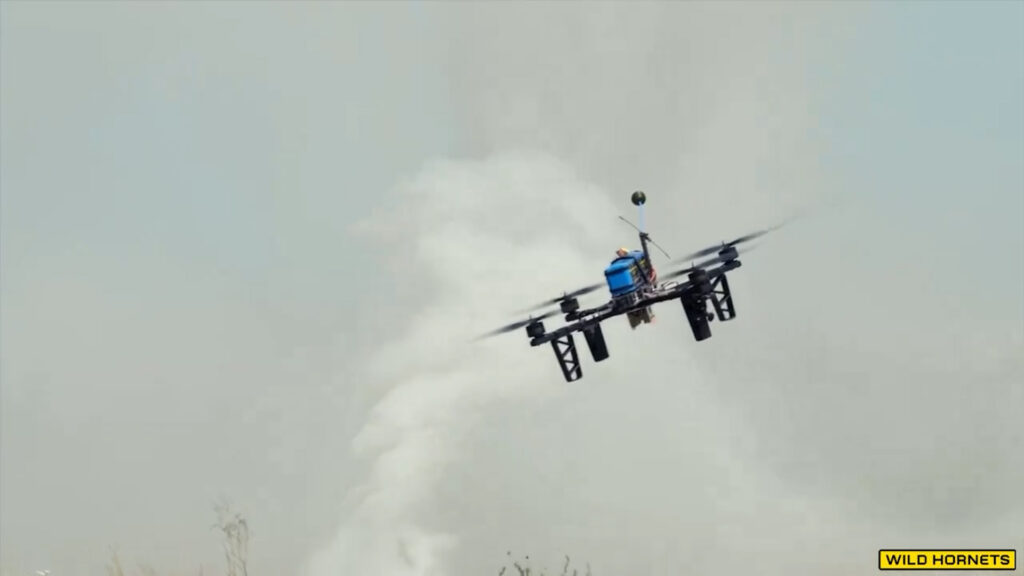Ukraine carried out its first confirmed battlefield kill using a drone-mounted grenade launcher, marking a new chapter in combat drone capabilities. According to the Ukrainian mil-tech group Wild Hornets, the strike occurred in the Novopavlivka sector. It involved a modified Queen Hornet FPV drone equipped with a Bulgarian-made Bulspike-AP grenade launcher.
The Queen Hornet drone, developed in Ukraine, is a 17-inch multi-role UAV capable of carrying up to 9.5 kilograms over five kilometers, or lighter loads of 6 kilograms up to 17 kilometers. The drone’s modular design lets operators attach two 4-kilogram grenade launchers or configure it for reconnaissance, logistics and electronic warfare missions.
What makes this drone weapon combination significant?
The drone fires an ROG-22 Anti-Personnel Grenade, a round designed for use against infantry and unarmored vehicles. Upon detonation, the projectile releases more than a thousand fragments, with an effective range of roughly 100 meters. Video from field tests showed that the drone remained stable after firing, addressing one of the biggest technical challenges for lightweight, weaponized UAVs: managing recoil without losing flight control.
According to Wild Hornets, more than 100 Queen Hornet drones are already in active use along the front lines and production rates are continuing to rise.
How does this change battlefield tactics?
Unbiased. Straight Facts.TM
Ukraine’s military uses about 100 different types of drones, which range from toy models to large models with nearly 20-meter wingspans.

Ukrainian drone operators say this innovation offers quicker and more precise strikes than traditional kamikaze drones. One operator noted that while FPV drones are loud and can be spotted before impact, a grenade-fired round travels nearly instantly, giving targets less time to react.
The platform’s reusability also adds value. Unlike suicide drones, the Queen Hornet can fire, return and reload, making it more sustainable and versatile in long-term operations.
Ukrainian veterans and tech developers interviewed by Kyiv Post described the move as a leap forward in unmanned warfare. Some predicted it would force Russian infantry to take cover or retreat at the mere sound of an approaching drone, limiting their ability to regroup or advance in exposed areas.
What other systems is Ukraine adapting for combat?
The Queen Hornet is part of a broader effort by Ukraine’s defense forces to weaponize commercial and agricultural drones for military use. In 2024, engineers retrofitted a DJI Agras T30, a drone built initially for crop spraying, with a PKM machine gun and Bullspike-AT grenade launcher. The upgraded platform can now engage heavier targets such as tanks and self-propelled artillery.
Ukraine’s Main Intelligence Directorate also recently unveiled marine drone carriers equipped to deploy both FPV and fixed-wing aircraft-type drones for coordinated strikes against Russian positions in Crimea.
What comes next for drone warfare in Ukraine?
Ukrainian developers continue refining modular drone systems to meet battlefield needs, from direct fire support to intelligence gathering. With ongoing foreign military support and battlefield innovation, Ukraine’s drone arsenal is expected to expand in both volume and technical sophistication.
contributed to this report.


